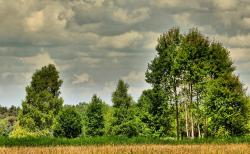 Web Content Display
Web Content Display
FORESTS OF THE FOREST DISTRICT
Żagań Forest District governs over 20.000ha of forests. Naturewise, it is an incredibly attractive area full of plants and animals.
The area of Żagań Forest District is characterised by the varied lie of the land.
In terms of geomorphology the forest district in principle is located on two areas. The former (20% or forest district area) is constituted by north-western part of Iłowa precinct. These are Żary Hills, part of greater unit of Trzebnica Embankment. It is a system of dismembered moraine hills with Tertiary layers. The latter, it is 80% of the district area belonging to mesoregion of the Lower-Silesian Forests. It is predominantly built on extensive valleys of outwash and river sand of mid-Polish ice age.
17 types and 49 sub-types of soil have been differentiated. The most common is rusty soil followed by leached soil and interesting ochre soil.
Żagań Forest District stretches through 5th Land of Silesia and Region of Lower-Silesian Plain.
a. Mesoregion of Dalków Hills (V.1.a)
b. Mesoregion of Lower-Silesia Forests (V.1.b)
Teritorial range of the forest district is 20 426.16 ha and is characterised by considerable woodiness, up to 73.7%.
One of the most vital elements of the regional environment are rivers which greatly influence water and climate relations. Through the area of the forest district flow the following: Bórb, Czerna, Kwisa, Olsza and Łubianka. High surface area of forest complexes contributes to increasing rainfalls and air humidity and lowering temperature range compared to non-forested areas. Climate shapes a mild kind of weather, with clouded sky, rainfalls, lower temperature in summer and higher in winter.
Overwhelming sylvian habitats with significant advantage of pine indicate rather little variety of flora. It does not mean, however, that they are less interesting. Fertile soil mean wood habitats of richer flora. Apart from trees shrubs and undergrowth plants constitute flora. On the area of Żagań Forest District one can find many protected species such as Cladonia arbuscula, Cetraria islandica, clubmoss, orchids as well as protected natural monuments.
Fauna is equally impressive as flora. Protected species of birds such as white-tailed eagle, black kite, red kite, black stork, while amphibians are represented by natterjack toad, bufo bufo, European green toad, crested newt, moor frog, marsh frog, common frog.


 Lasy Nadleśnictwa, fot. Przemysław Krawczyk
Lasy Nadleśnictwa, fot. Przemysław Krawczyk
